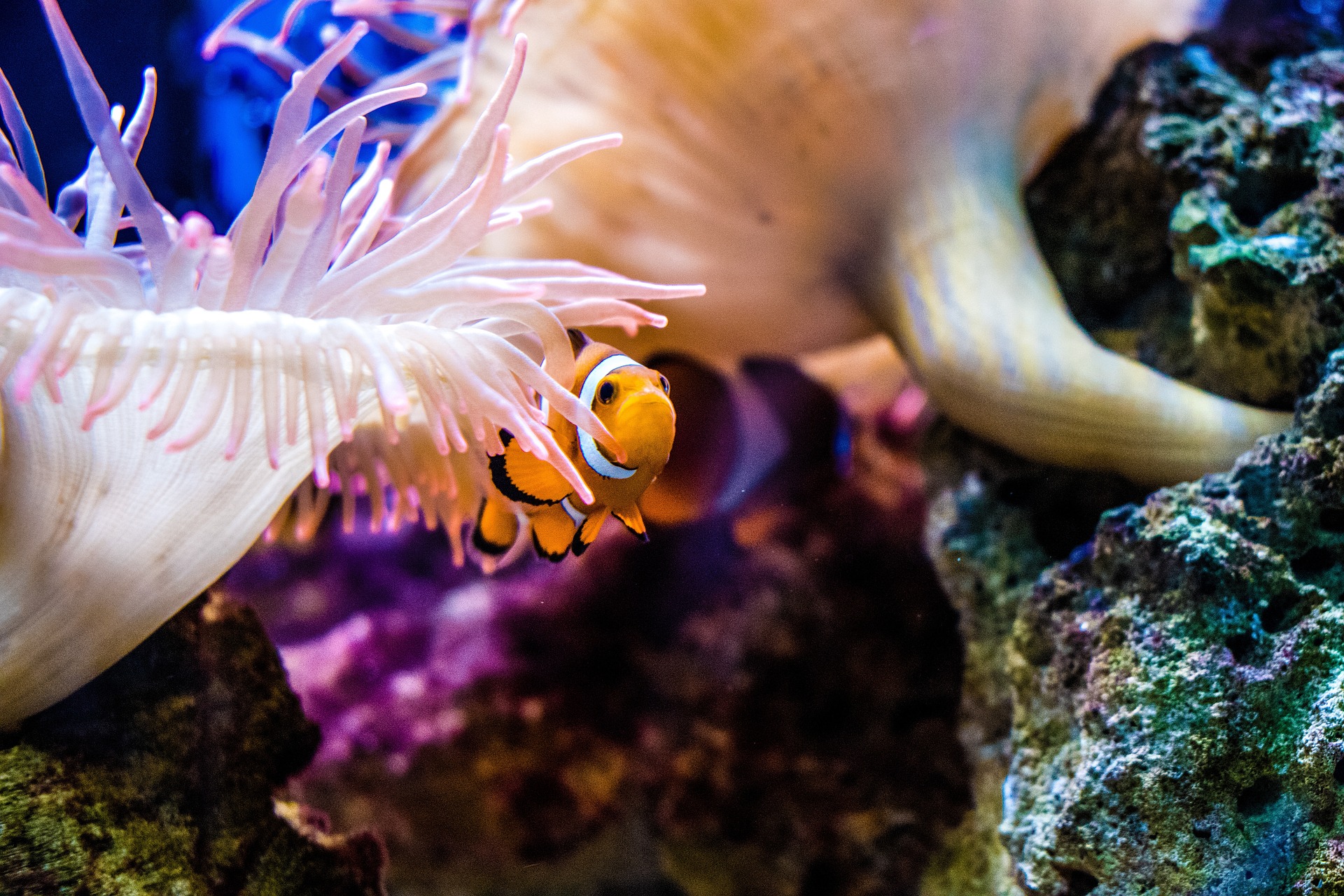Coral reefs are among the oldest ecosystems on earth, but it is well-known that they are also some of the most vulnerable to climate change. Their natural functions are very important for humans and nature: they are habitats for a quarter of all marine life, they protect our coastlines and homes, and they feed over one seventh of the Earth’s human population.
Unfortunately, they are now living at the upper limit of their thermal threshold, making them sensitive to even minimal increases in ocean temperatures. Summer temperature anomalies in the last decades have regularly disrupted the fragile symbiosis between corals and their algal symbionts causing coral bleaching, with recurrent and stronger bleaching events expected in the coming decades. Climate change is altering corals reefs around the world, affecting the distribution, abundance and biodiversity of coral reef–associated organisms.
In order for corals to survive through the next decades, they must adapt their physiology and metabolism to new ocean circulation patterns, nutrient inputs, and oxygen contents, higher water temperatures, and lower pH. Acclimation to environmental change can occur to some extent via phenotypic plasticity, but lasting, genetic adaptation can come about largely by way of sexual reproduction and natural or selective breeding.
Recent studies on different species of corals show the evidence of alterations due to climate change but they also analyze the adaptations that these species can carry out to survive.
In the study of Bouwmeester J. et al. (2023) [1] they investigated the individual and combined effects of temperature, photosynthetically active radiation (PAR), and ultraviolet radiation (UVR) on the spawning patterns and reproductive physiology of the Hawaiian mushroom coral Lobactis scutaria, using long-term experiments in aquaria. While thermal stress is viewed as the main cause of coral bleaching, solar radiation, both in the visible and the ultraviolet wavelengths, can significantly influence the severity of thermally induced coral bleaching. Solar radiation in the visible range (PAR: 400–700 nm) is vital to photosynthetic organisms such as the algal symbionts that live within the tissue of reef-building corals; but at levels beyond the organism’s thresholds, the photosystem saturates, and harmful reactive oxygen species (ROS) are released, damaging the photosynthetic apparatus. The cellular physiology and pathways involved during UVR-related stress alone are not fully understood but experiments that manipulated UVR alone revealed rapid lethal effects of full UVR exposure in the worst cases, and reduced growth and calcification in the best cases.

In the experiment scleractinian coral Lobactis Scutaria, a sequential hermaphroditic, free-living solitary coral from the family Fungiidae, commonly found in Kāneʻohe Bay, Oʻahu, Hawaiʻi were collected and two hundred individuals were divided into eight treatments, each exposed to one of two levels of temperature, UVR and PAR. The high temperature regimen aims to follow modern temperature records from 2014 to 2019 (includes two bleaching events) and the low temperature regimen aims to follow historical temperatures from 2008–2013. Filtered UVR is 98% filtered. High PAR is 5% shaded and low PAR is 35% shaded.
Temperature, ultraviolet radiation (UVR) and photosynthetically active radiation (PAR) all played significant but different roles in affecting the reproductive biology of the coral L. scutaria. The present study showed that timing of spawning was affected by higher temperature and blocked UVR but not by PAR. Fertilisation success was affected by higher temperature, and sperm and egg physiology were affected both by temperature and PAR. Growth was affected by temperature, and corals paled more at the higher levels of temperature and PAR and when UVR was filtered out. The interactions of thermal stress with light stress both at the PAR level and UVR level are clearly complex, but understanding the individual role of each factor, and understanding how they interact, provides vital information to better understand how to manage these stressors in the changing environment that we are expecting in the coming decades.
In the study of Hazraty-Kari S. et al [2], they used the reef building coral Acropora Tenuis. The coral Acropora is a broadcast spawner. Larvae disperse after fertilization within released gametes and recruit in the reef. Fragments from the same colony are subjected to control temperature (~27.5 °C) or heat stress (~31 °C) for ten days. The fecundity of adults, egg number and size, and the thermal tolerance of larvae and recruits, survival rates, growth, and size, were analyzed. The stressed fragments show a trade-off in egg production, an increase in egg number but a decrease in size. In addition, larvae and recruits from the stressed colony show marginally higher survival rates in the higher water temperature but do not differ in the control condition.

Therefore, corals produce more heat-resistant larvae and recruits after they experience heat stress, which may improve coral reef resilience.
The study showed that thermal stress influenced reproduction and the early life stages of corals without causing any changes in energy investment. They found that colonies that experienced heat stress developed tactics to increase larvae and recruit survival in higher water temperatures. Therefore, if parents experience the heatwaves, they may prepare eggs to survive their larvae in heatwaves, which could arise next spawning. However, further research is required to understand the relationship between warm ocean temperatures, coral recruitment survival, and recovery potential over successive generations.
[1] Solar radiation, temperature and the reproductive biology of the coral Lobactis scutaria in a changing climate – Jessica Bouwmeester, Jonathan Daly, Nikolas Zuchowicz, Claire Lager, E. Michael Henley, Mariko Quinn and Mary Hagedorn; Sci Rep 13, 246 (2023).
[2] Adaptations by the coral Acropora tenuis confer resilience to future thermal stress– Hazraty-Kari, S., Tavakoli-Kolour, P., Kitanobo, S. et al. . Commun Biol 5, 1371 (2022).





